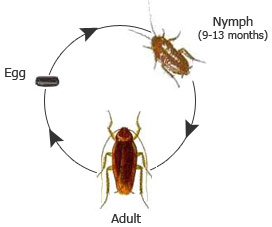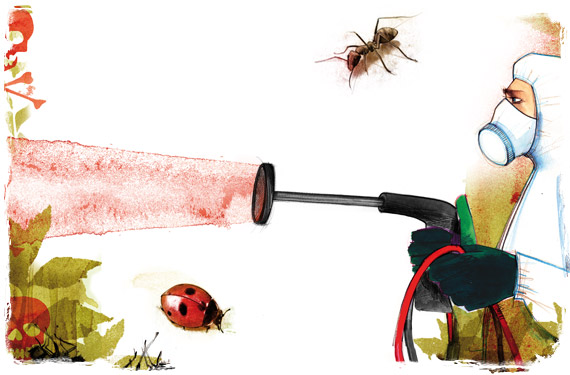CHAPTER 6- VECTOR CONTROL
CHAPTER 6- VECTOR CONTROL
What is vectors and pests actually? Well, today I will define the meaning of vector and pests.
Vectors is animal or insects that bring diseases to human. Pests is a destructive insect or other animal that attacks crops, food and livestock.
 |
| https://blogger.googleusercontent.com/img/b/R29vZ2xl/AVvXsEgHZlPzuHYWxZ_4lrmuzyeciiXKX4JBvGbz6eg2br8XgawLSCntYXwTlYdDwkj-WvuXnM5gDJCA2Lj2r9CcLZT0v9vW0MzZJGQcR-IxEUn5Es5FqEvayHi90EiYkYBD8z45wtqFC_-xDrka/s1600/common+pest.jpg Vector is also known as a vehicle that brings agent to the host based from the epidemiology triangle. Not all vectors is a pests and not all pests is a vector. There are some example of vectors which are rodents, cockroach, mosquitoes, flies, fleas and ticks. |
 | ||||
| (source from https://onlinecourses.science.psu.edu/stat507/node/25) TYPES OF VECTORS AND PESTS:
Rodents (from Latin rodere, "to gnaw") are mammals of the order Rodentia, which are characterized by a single pair of unremittingly growing incisors in each of the upper and lower jaws. About forty percent of all mammal species are rodents; they are found in vast numbers on all continents except Antarctica. They are the most diversified mammalian order and live in a variety of terrestrial habitats, including human-made environments. There are species that are arboreal, fossorial(burrowing), and semiaquatic. Well-known rodents include mice, rats, squirrels, prairie dogs, porcupines, beavers, guinea pigs, hamsters, and capybaras. Other animals such as rabbits, hares and pikas were once included with them, but are now considered to be in a separate order, Lagomorpha.
Most rodents are small animals with robust bodies, short limbs and long tails. They use their sharp incisors to gnaw food, excavate burrows and defend themselves. Most eat seeds or other plant material, but some have more varied diets. They tend to be social animals and many species live in societies with complex ways of communicating with each other. Mating among rodents can vary from monogamy, to polygyny, to promiscuity. Many have litters of underdeveloped, altricial young, while others have precocial young that are relatively well developed at birth.
The rodent fossil record dates back to the Paleocene on the supercontinent of Laurasia. They greatly diversified in theEocene, as they spread across continents, sometimes even finding means to cross oceans. Rodents reached both South America and Madagascar from Africa, and were the only terrestrial placental mammals to reach and colonize Australia.
Rodents have been used as food, for clothing, as pets and as laboratory animals in research. Some species, in particular thebrown rat, the black rat, and the house mouse are serious pests, eating and spoiling food stored by humans, and spreading diseases. Accidentally introduced species of rodents are often considered to be invasive, and have caused the extinction of numerous species, such as island birds, previously isolated from land-based predators.
CHARACTERITICS:
The distinguishing feature of the rodents is their single pair of continuously growing, razor-sharp incisors.[1] These incisors have thick layers of enamel on the front and little enamel on the back.[2] Because they do not stop growing, the animal must continue to wear them down so that they do not reach and pierce the skull. As the incisors grind against each other, the softer dentine on the rear of the teeth wears away, leaving the sharp enamel edge shaped like the blade of a chisel.[3] Most species have up to 22 teeth with no canines or anterior premolars. There is a gap, or diastema, between the incisors and the cheek teeth in most species. This allows them to suck in their cheeks or lips to shield their mouth and throat from wood shavings and other inedible material, discarding this waste from the sides of their mouth.[4] Chinchillas and guinea pigs have a high fiber diet; their molars have no roots and grow continuously like their incisors.[5]
In many species, the molars are relatively large, intricately structured and highly cusped or ridged, though some, such asPseudohydromys, have smaller and simpler ones. Rodent molars are well equipped to grind food into small particles.[1] The jaw musculature is strong. The lower jaw is thrust forward while gnawing and is pulled backwards during chewing.[2] Rodent groups differ in the arrangement of the jaw muscles and associated skull structures, both from other mammals and amongst themselves. TheSciuromorpha, such as the eastern grey squirrel, have a large deep masseter, making them efficient at biting with the incisors. TheMyomorpha, such as the brown rat, have an enlarged temporalis muscle, making them able to chew powerfully with the molars. TheHystricomorpha, such as the guinea pig, have a larger superficial masseter muscle and a smaller deep masseter muscle than rats or squirrels, possibly making them less efficient at biting with the incisors, but their enlarged internal pterygoid muscle may allow them to move the jaw further sideways when chewing.[6]
While the largest species, the capybara, can weigh as much as 66 kg (146 lb), most rodents weigh less than 100 g (3.5 oz). The smallest rodent is the Baluchistan pygmy jerboa, which averages only 4.4 cm (1.7 in) in head and body length, with adult females weighing only 3.75 g (0.132 oz). Rodents have wide-ranging morphologies, but typically have squat bodies and short limbs.[1] The forelimbs usually have five digits, including an opposable thumb, while the hindlimbs have three to five digits. The elbow gives the forearms great flexibility.[3][7] The majority of species are plantigrade, walking on both the palms and soles of their feet, and have claw-like nails. The nails of burrowing species tend to be long and strong, while arboreal rodents have shorter, sharper nails.[7] Rodent species use a wide variety of methods of locomotion including quadrupedal walking, running, burrowing and climbing, bipedal hopping (kangaroo rats and hopping mice), swimming and even gliding. Scaly-tailed squirrels and flying squirrels, although not closely related, can both glide from tree to tree using parachute-like membranes that stretch from the forelimbs to the hindlimbs.[8] The agouti is fleet-footed and antelope-like, being digitigradeand having hoof-like nails. The majority of rodents have tails, which can be of many shapes and sizes. Some tails are prehensile, as in the Eurasian harvest mouse, and the fur on the tails can vary from bushy to completely bald. The tail is sometimes used for communication, as when beavers slap their tails on the water surface or house mice rattle their tails to indicate alarm. Some species have vestigial tails or no tails at all.[1] In some species, the tail is capable of regeneration if a part is broken off.[3]
Rodents generally have well-developed senses of smell, hearing and vision. Nocturnal species often have enlarged eyes and some are sensitive to ultraviolet light. Many species have long, sensitive whiskers or vibrissae for touch or "whisking". Some rodents have cheek pouches, which may be lined with fur. These can be turned inside out for cleaning. In many species, the tongue cannot reach past the incisors. Rodents have efficient digestive systems, absorbing nearly 80 percent of ingested energy. When eating cellulose, the food is softened in the stomach and passed to the cecum, where bacteria reduce it to its carbohydrate elements. The rodent then practicescoprophagy, eating its own fecal pellets, so that the nutrients can be absorbed by the gut. Rodents therefore often produce a hard and dry fecal pellet.[1] In many species, the penis contains a bone, the baculum; the testes can be located either abdominally or at the groin.[3]
Sexual dimorphism occurs in many rodent species. In some rodents, males are larger than females while in others the reverse is true. Male-bias sexual dimorphism is typical for ground squirrels, kangaroo rats, solitary mole rats and pocket gophers; it likely developed due to sexual selection and greater male-male combat. Female-bias sexual dimorphism exists among chipmunks and jumping mice. It is not understood why this pattern occurs, but in the case of yellow-pine chipmunks it may be that males selected larger females due to their greater reproductive success. In some species, like voles, sexual dimorphism can vary from population to population. In bank voles, females are typically larger than males, however male-bias sexual dimorphism occurs in alpine populations, possibly because of the lack of predators and greater competition between males
3 TYPES OF RODENTS:
Roof rats (rattus rattus)
Norway rats (Rattus Norvegicas)
 Mosquitoes- Is an insects that bites the skin of people and animals and sucks their blood. It can spread its diseases from it's proboscis (sharp beak on it's mouth) and salivary gland. It carry dangerous diseases such as dengue, malaria, yellow fever, chikungunya and filariasis. Its only active during dawn and dusk only. (source fromhttp://www.enchantedlearning.com/subjects/insects/mosquito/lifecycle.shtml) Flies- House flies are recognised as carriers of easily communicable diseases. It also collect pathogens on their legs and mouths and carry diseases on their legs and the small hairs that cover their bodies.  (source from http://animals.howstuffworks.com/insects/housefly4.htm) House flies are strongly suspected of transmitting at least 65 diseases to humans, including typhoid fever, dysentery, cholera, poliomyelitis, yaws, anthrax, tularemia, leprosy and tuberculosis. Flies regurgitate and excrete wherever they come to rest and thereby mechanically transmit disease organisms. It usually appear at dirty place such as trash can, market, slaughter house, food factory processes and animal barns. Cockroach- They are common and hardy insects, and can tolerate a wide range of environments from Arctic cold to tropical heat. Its usually live at dark place or slit places such as in the drain at the bathroom or in the cupboard. It usually active during night time.  (source from http://www.pestcontrol.ae/cockroaches-life-cycle) It is believed that the cockroach may be a reservoir for a range of bacteria including salmonella, staphylococcus and streptococcus. The cockroach can also harbour viruses such as the polio virus. Types of cockroaches: 
A) German cockroach
B) American cockroach
C) Australian cockroach
D&E) Oriental cockroach
(source from https://en.wikipedia.org/wiki/Cockroach) 4 Pest control:  (source fromhttp://www.amalpest.com.au/LearningCentre/PestControlStrategies) Biological control- is a method of controlling pests such as insects, mites, weeds and plant diseases using other organisms. It relies on predation, parasitism, herbivory, or other natural mechanisms, but typically also involves an active human management role.  (source from https://en.wikipedia.org/wiki/Biological_pest_control) Cultural- it is the oldest methods that have been used to manage pest populations and they are preventative rather than curative they are dependent on long-range planning.  (source from http://horticulture.tekura.school.nz/plant-management/plant-management-3/ht1103-plant-management-3-study-plan/integrated-pest-management-ipm/) Physical- is a method of getting rid of insects and small rodents by removing, attacking, or setting up barriers that will prevent further destruction of one's plants.  (source from http://2015.igem.org/Team:Lethbridge/Practices_Current)  (source from http://www.canna-uk.com/how_control_pests_and_diseases_biological_vs_chemical) Chemical- it is often used to control diseases, pests or weeds. Chemical control is based on substances that are toxic (poisonous) to the pests involved. When chemical pesticides are applied to protect plants from pests, diseases or overgrowth by weeds, we speak of plant protection products. It is of course important that the plant that needs protection does not itself suffer from the toxic effects of the protection products.  (source from http://www.padminipestcontrol.com/) All my points is not mine, please refer it to link below: http://www.merriam-webster.com/dictionary/pest http://www.orkin.com/rodents/rats/rat-borne-diseases/ https://en.wikipedia.org/wiki/Mosquito-borne_disease http://www.orkin.com/flies/house-fly/house-fly-and-disease/ http://ento.psu.edu/extension/factsheets/house-flies https://www.betterhealth.vic.gov.au/health/healthyliving/ https://en.wikipedia.org/wiki/Biological_pest_control http://eap.mcgill.ca/publications/eap58.htm https://en.wikipedia.org/wiki/Physical_pest_control https://en.wikipedia.org/wiki/Pest_control |



No comments:
Post a Comment